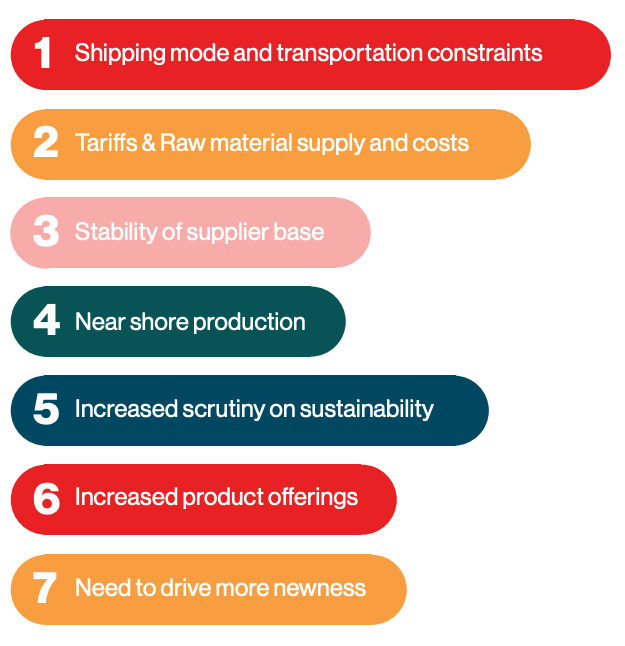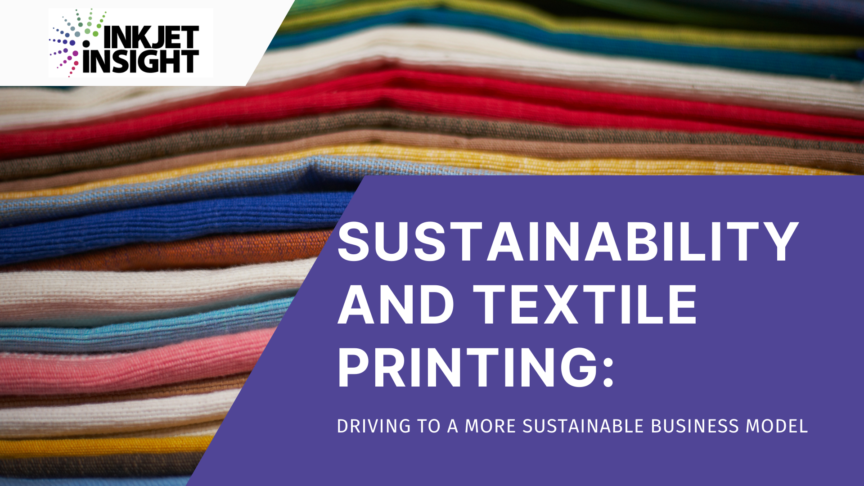Increased scrutiny on sustainability throughout the textile supply chain has the potential to increase demand for digital textile printing. According to UBS Investment Bank, the fashion industry consisting of apparel and textiles emits more CO2 than aviation and shipping combined, causes 20% of industrial water pollution, and uses 79 billion m3 of water per year.
The industry acknowledges it has been heavily based on a fast fashion model of delivering minimum viable products that has resorted in a dominant business model of low cost garments that typically get landfilled or incinerated – and according to UBS, within just a year of production.
McKinsey’s State of Fashion Report states that as much as 12% of fibers are discarded on the factory floor, 25% of garments remain unsold and less than 1% of products are recycled into new garments.
The World Trade Organization (WTO) states that more than 60 percent of apparel and textile sourcing has come from Asia over the last decade contributing to carbon emissions from long transportation routes.
Brand demand shifts can decimate economies. According to McKinsey, $2.8 billion of orders from Bangladeshi suppliers were cancelled by March of 2020, impacting the lives of 1.2 million workers.
Given these challenges to the textile industry, it should come as no surprise that an increased scrutiny on sustainability is now one of the biggest changes impacting global supply chains. In fact, Fashion In Focus 2021 reports that increased scrutiny on sustainability is now the fifth most important change impacting global supply chains.

Source: Fashion In Focus 2021 Report by The Sourcing Journal
What Is Sustainability
Part of the challenge is the lack of a standard definition for sustainability. As a result, many brand owners are developing their own goals based on the United Nations’ Sustainable Development Goals. The specific goals of good health and well-being, clean water and sanitation, affordable and clean energy, industry innovation and infrastructure and responsible consumption and production seem to be topping brand goals. Brand owners are actively seeking solutions that impact their sustainability concerns and that can also solve global supply chain challenges.
Sustainable Substrates
Sustainability is impacting substrate selection. Brand owners want to know products were sustainably sourced with documented custody throughout product life. IKEA states it has already reached an important goal specific to cotton sourcing. “Since 2015, all the cotton we use for IKEA products comes from more sustainable sources. This means that the cotton is either recycled, or grown with less water, chemical fertiliser and pesticide, while increasing profit margins for farmers.” Beyond the substrate itself, brands like IKEA want to ensure workers are fairly treated and compensated.
Demand for sustainable substrates also includes polyester. Delta Apparel, a leading US distributor of t-shirt blanks in the direct-to-garment industry offers products made from recycled polyester as a part of its sustainability goals.
In a recent earnings call, Gildan stated its intent to run at lower average inventories going forward. Rival t-shirt manufacturer Fruit of the Loom announced targets to reduce greenhouse gas emissions by 52%, reduce water by 11% and utilize 45% renewable electricity.
Business Model Shift
The textile industry has traditionally made a lot of stuff, sold some of it and then landfilled or incinerated the unsold inventory. As manufacturers were left holding large amounts of inventories such as the companies in Bangladesh who saw so many order cancellations, an increased urgency came to mitigate unsold inventories to address sustainability goals and bottom line profitability concerns.
JTB Custom says its software is key to helping brands take measured steps to convert operations to a truly on-demand model where products are sold and then made. Founder Judd Barr states that Vera Bradley quintupled volume in just six months after integrating its software to enable an on-demand business model that enables consumers to build their bags from the ground up customizing function, fit and decoration.
Barr says custom can be done quickly, at reasonable costs and that the capability exists to deliver a pair of shoes made in Asia within three days. Barr also states that custom, on-demand orders typically see much lower return rates of less than 3% versus return rates of 15% to 20% for traditionally manufactured items. Reducing return rates has the potential to minimize carbon emissions from duplicative transportation.
What It Means for Inkjet
Digital printing is a key enabler to an on-demand business model. With an increase in e-commerce powered by the pandemic, consumers are primed to frequent digital store fronts. The digital store front enables unlimited sku selection versus traditional retail. Digital printing also means printing a quantity of one and delivering an on-demand business model is economically viable. Thereby, brand owner desire to mitigate sold – or worse, landfilled – inventories could be solved by digital printing. Because digital printing can efficiently produce quantities of one, it also has the potential to reduce the amount of strike-offs and sampling required during new product development. This further conserves resources and prevents supply chain waste.
Digital printing has to the opportunity to help printers reduce the amount of carbon emissions as well as the water and electricity used in the decoration process. According to a recent report from Smithers, over 90% of digital inks for textile printing are water-based whereas the majority of rotogravure inks are solvent based. This means digital printing can lower VOC emissions that contribute to carbon footprint. MS Italy, a leading Italian producer of digital textile printers, states that the water consumed in traditional textile printing is typically 100 liters/kilogram. FESPA likens this to 50 – 60 liters of water per linear meter. MS Italy promises its digital textile printing processes can reduce the water utilized in the textile printing process by 90% to just 10 liters. According to SPG Print’s Jos Notermans, if all linear meters in the world during one year were printed by digital textile printers instead of conventional printing, we would save 760 billion liters of water, which could provide each human being on the planet with 2 liters of clean fresh water per day for 50 days. In addition, pigment inks such as those from DuPont Artisti do not require post processing steps like steaming and washing. This has the potential to further reduce energy and water demands.
Unlike rotogravure printing, digital printing does not use engraved rollers. Eliminating engraved rollers mitigates the amount of chrome plaiting and reclaiming chemistries used in the manufacturing process of those rollers. This could positively impact clean water goals.
According to a recent report from Smithers, most digital printing is done on polyester and cotton substrates so digital printing should be ideal for sustainable cotton and recycled polyester textiles that continue to gain share in the textile supply chain.
Sources:

